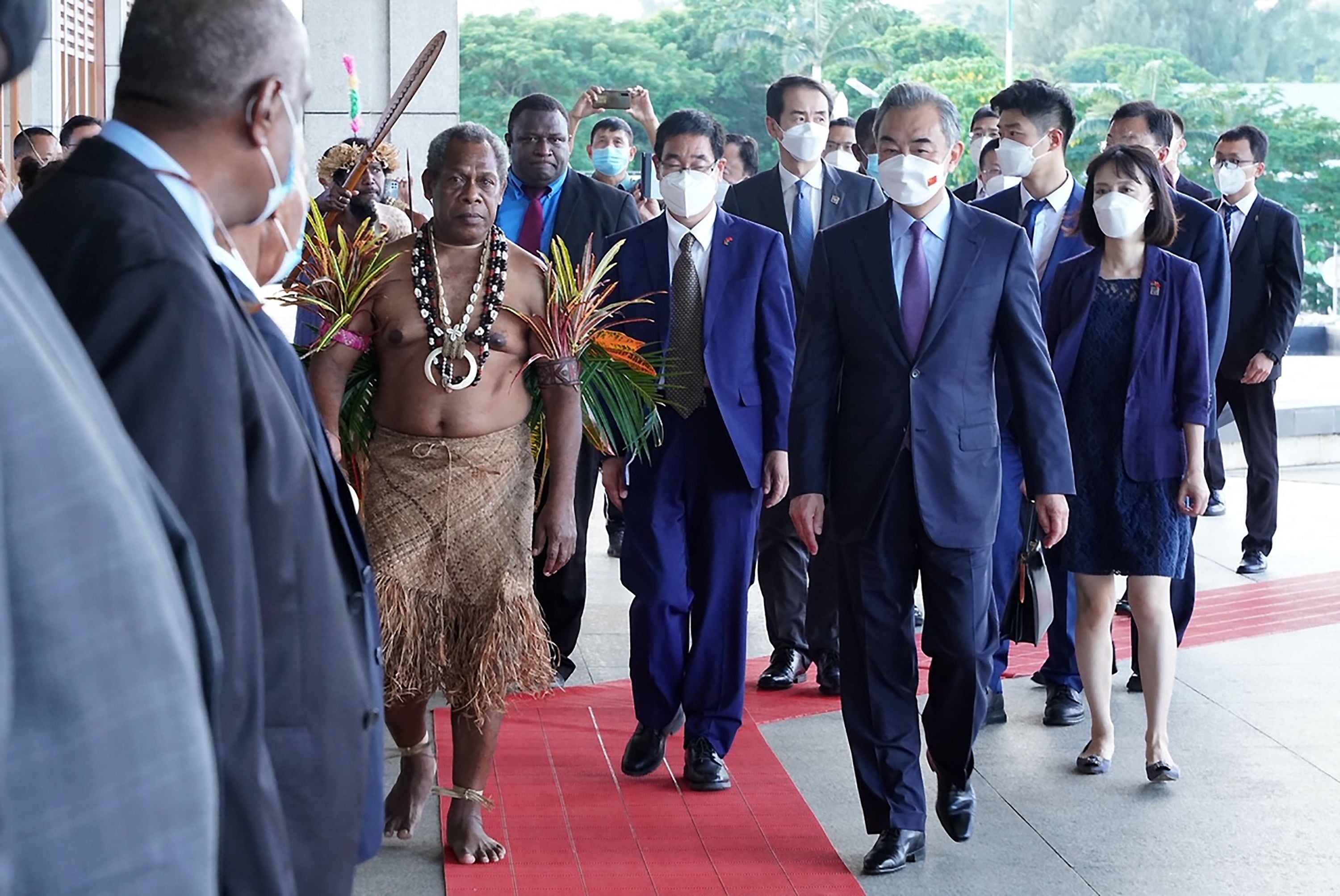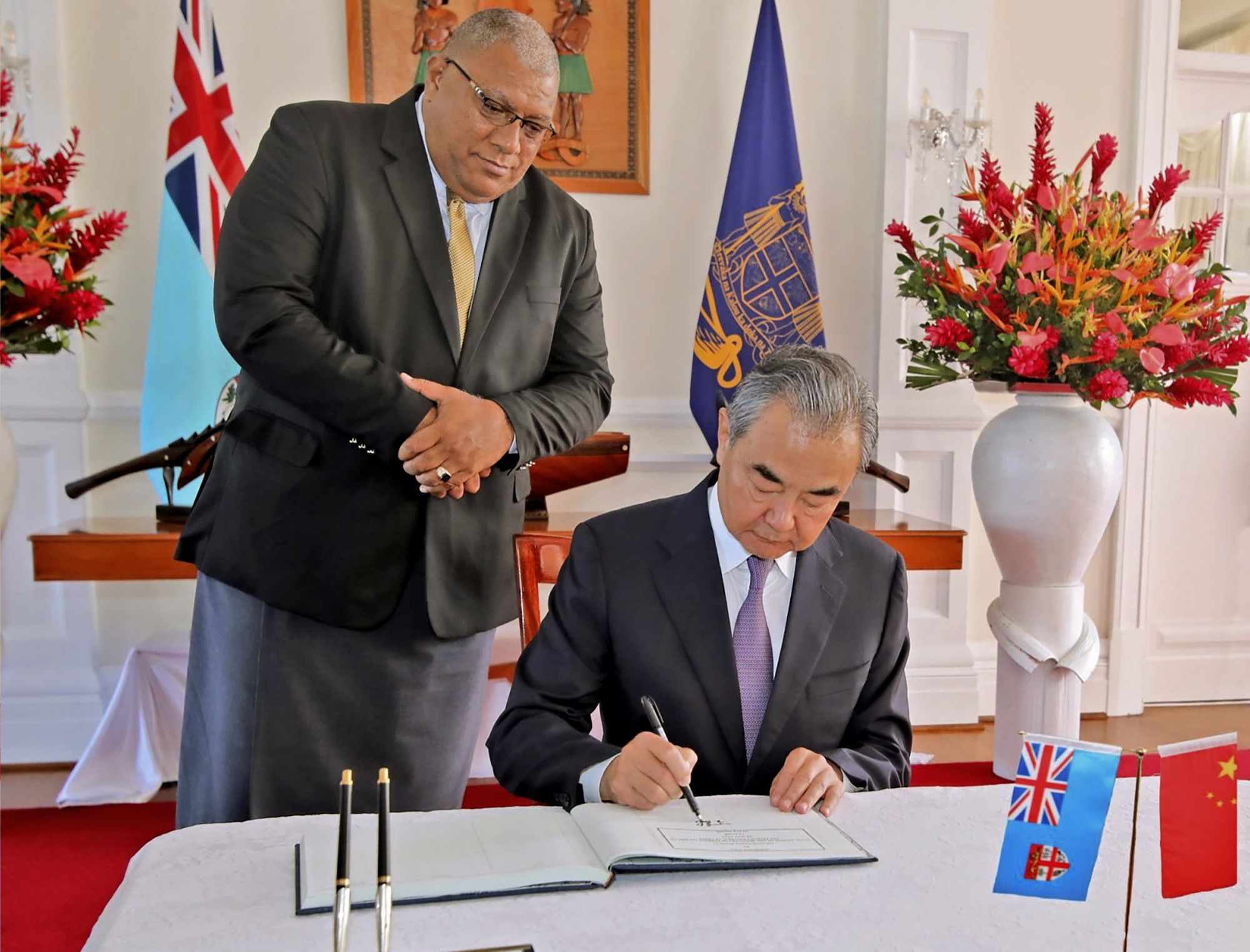Tonga is 750 square kilometers, about twice the size of Carabayllo, but about 100,000 people live there. A point in the immensity of the Pacific Ocean. What unusual interest does that small island have for the Foreign Minister of Chinathe Asian giant where 1.4 billion people live, has visited in recent days?
Tonga and nine other South Pacific island territories have become the new focus of tension between China, the United States and their allies. Suddenly, the small islands located at the edge of the world and that are at risk of disappearing due to climate change, have become the axis of Beijing’s latest geopolitical campaign in its eagerness to take away Washington’s influence.
the minister Wang Yi concluded a ten-day tour of several South Pacific islands in order to strengthen ties and convince them to sign an agreement called the China-Pacific Island Countries Joint Development Vision, which he ultimately failed to achieve. Thus, they decided not to accept, for now, the multilateral agreement on security, cooperation and trade offered by Beijing.
China it gave them millions of dollars in aid, plus the prospect of a free trade agreement and access to its huge market. In exchange, Beijing would train local police, engage in their cybersecurity, expand political ties, and gain greater access to the maritime and fishing resources of these islands. Australia, a faithful ally of the United States and whose relations with China They are going through their worst moment, he showed his relief when he learned that the agreement was not signed because they assure that the true objective of Beijing is to build military bases.
READ ALSO: New friction between the US and China: will Taiwan become another focus of a war?
Not for nothing, the same day that the Chinese foreign minister arrived in the Solomon Islands, his Australian counterpart, Penny Wong, did so in Fiji, from where he warned of the consequences of getting too close to China.

But the Chinese will have taken a step back, but they will persist in order to achieve a key and strategic role in the South Pacific. In fact, it cannot be said that Wang’s tour was a failure since he managed to sign bilateral agreements with Samoa and Papua New Guinea, the latter one of the largest islands in Oceania, and which will allow him to have ships and soldiers patrolling in the sea. This is in addition to the security pact that they had already achieved last April with the Solomon Islands and thanks to which Chinese police are training local forces.
And not only that. China He has already promised to appoint a special envoy for the islands in order to strengthen collaboration in the fight against climate change, natural disasters, infrastructure, fishing and education.
READ ALSO: Western powers warn of China’s plans in the South Pacific

strategic area
The main objective of China is to continue expanding its economic and strategic influence. They have already done it in Latin America, they continue to do it in Africa and Southeast Asia. The small islands of the South Pacific do not have to be left out, especially for what they mean. It was not for pleasure that the United States settled in Guam and in World War II they had a special role in the confrontation against Japan.
This is how The New York Times explains it: “From Papua New Guinea to Palau, countries in the region have jurisdiction over an ocean area three times the size of the United States, stretching from southern Hawaii to exclusive economic zones abutting Australia, Japan and the Philippines” .
Several experts have already pointed out that this Chinese move is nothing more than a consequence of the carelessness of the Americans for forgetting this region of the world, which is not only full of small tourist islands -which do not stop crying out for help to the world in the face of the rise in sea due to global warming – but are located in an area full of natural resources.
READ ALSO: Biden assures that the United States will defend Taiwan militarily if China invades the island
“Indeed, they are islands that are far from the Chinese coast, but by having them on their side they expand their network of ports”the Spanish journalist Isidre Ambrós, an expert on Asia-Pacific and former correspondent in China for the newspaper “La Vanguardia”, told El Comercio. “One of the aspects of these cooperation agreements is precisely to take advantage of these ports to serve as logistical support for Chinese troops and their ships, and at a certain moment they could serve as operational bases. In addition, it also helps them to secure their supply chain“, Add.
“The United States does not have a significant presence in the Pacific at all, even though they believe they do.”, told “The New York Times” Anna Powles, senior security researcher at Massey University in New Zealand.
“These territories have been set aside by the Western powers, not only because they are very far away but because they no longer have the economic resources to station many diplomats or make investments there. So, the Chinese have seen a virgin land there to exploit, invest, gain influence and place their products”, notes Ambrós.

Beyond the Indo-Pacific
Although the administration of Joe Biden has pointed out the importance that the United States wants to give to the Asian continent by reinforcing its influence in the Indo-Pacificthe truth is that the war in Ukraine has diverted their attention.
The head of American diplomacy, Antony Blinken, recently admitted that China is the one taking the initiative: “China is the only country with both the intent to change the international order, and the growing economic, diplomatic and technological power to do so.”
“You have to take into account the latest moves by the US and Australia, such as the AUKUS strategic partnerships or the US-Japan-Australia-India deal. They are moves that Beijing interprets as strategic with the aim of surrounding and isolating China in the Indo-Pacific. So Beijing tries to counteract by extending its influence to this insular area.”comment Ambrose.
The analyst concludes: “The fact that the agreement has not been signed now does not mean that the Chinese will not insist. It is a far-reaching pact that draws on the horizon a future of tension for the control of that area between the two superpowers”.
Therefore, in this new cold war Come in China Y USA, no territory, no matter how small, is insignificant. In the end, in the battle for hegemony, everything adds up.
Source: Elcomercio
I, Ronald Payne, am a journalist and author who dedicated his life to telling the stories that need to be said. I have over 7 years of experience as a reporter and editor, covering everything from politics to business to crime.

:quality(75)/cloudfront-us-east-1.images.arcpublishing.com/elcomercio/DU2JTCTEKVH7JD7RKKYL3Y5JIY.jpg)

:quality(75)/cloudfront-us-east-1.images.arcpublishing.com/elcomercio/URQD6DOQ3BAF5B6G4P4RSVSHBU.jpg)


:quality(75)/cloudfront-us-east-1.images.arcpublishing.com/elcomercio/WRDBVCKZKVACLBKYF4V2QHENXQ.jpg)
